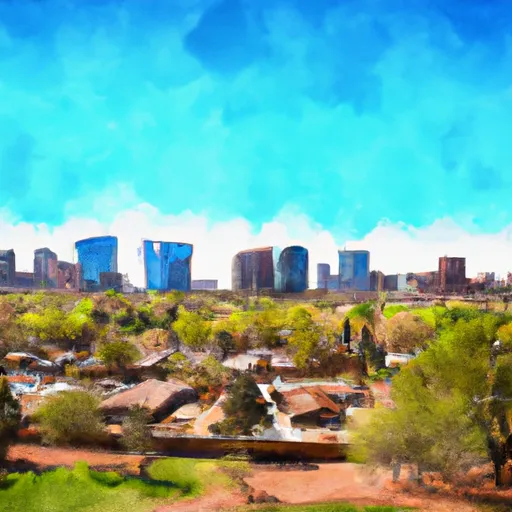-
 Snoflo Premium
Snoflo Premium
Get unlimited access to all our content
With no Ad interruptions! - Start Your Free Trial Login with existing account
Munds-Park
Eden Index
Climate
9.0
•
Recreation
9.0
•
Community
•
Safeguard
6.8/10

Munds Park is a small community located in northern Arizona, approximately 20 miles south of Flagstaff. Situated at an elevation of around 6,800 feet in the Coconino National Forest, Munds Park enjoys a mild four-season climate. Summers are relatively cool, with average temperatures ranging from the mid-70s to low 80s Fahrenheit, making it an ideal escape from the scorching desert heat. Winters bring moderate snowfall, creating opportunities for outdoor winter activities like skiing and snowboarding.
The area surrounding Munds Park is abundant in hydrology constituents, with several lakes and ponds nearby. Lake Odell and Mormon Lake, both within a short drive, offer opportunities for fishing, boating, and water sports. The area is also known for its picturesque hiking and biking trails, such as the Munds Park Trail and the Arizona Trail, which provide breathtaking views of the surrounding forests and peaks.
Munds Park is a haven for outdoor enthusiasts, offering a variety of recreational opportunities in a beautiful natural setting, making it an appealing destination for those seeking an escape to nature.
What is the Eden Index?
The Snoflo Eden Index serves as a comprehensive rating system for regions, evaluating their desirability through a holistic assessment of climate health, outdoor recreation opportunities, and natural disaster risk, acknowledging the profound impact of these factors on livability and well-being.
Climate Health Indicator (CHI): 9.0
Munds-Park receives approximately
653mm of rain per year,
with humidity levels near 64%
and air temperatures averaging around
9°C.
Munds-Park has a plant hardyness factor of
6, meaning
plants and agriculture in this region thrive during a short period during spring and early summer. Most
plants will die off during the colder winter months.
By considering the ideal temperature range, reliable water supplies, clean air, and stable seasonal rain or snowpacks, the Climate Health Indicator (CHI) underscores the significance of a healthy climate as the foundation for quality living.
A healthy climate is paramount for ensuring a high quality of life and livability in a region, fostering both physical well-being and environmental harmony. This can be characterized by ideal temperatures, reliable access to water supplies, clean air, and consistent seasonal rain or snowpacks.
Weather Forecast
Streamflow Conditions
Verde
Area Rivers
Verde
Snowpack Depths
Verde
Reservoir Storage Capacity
Verde
Groundwater Levels
Recreational Opportunity Index (ROI): 9.0
The Recreational Opportunity Index (ROI) recognizes the value of outdoor recreational options, such as parks, hiking trails, camping sites, and fishing spots, while acknowledging that climate plays a pivotal role in ensuring the comfort and consistency of these experiences.
Access to outdoor recreational opportunities, encompassing activities such as parks, hiking, camping, and fishing, is crucial for overall well-being, and the climate plays a pivotal role in enabling and enhancing these experiences, ensuring that individuals can engage in nature-based activities comfortably and consistently.
Camping Areas
| Campground | Campsites | Reservations | Toilets | Showers | Elevation |
|---|---|---|---|---|---|
| Childs | 30 | 2,724 ft | |||
| Pine Flat | 56 | 5,557 ft | |||
| Cave Springs | 82 | 5,415 ft | |||
| Dairy Springs | 30 | 7,166 ft | |||
| Bootlegger | 10 | 5,168 ft | |||
| Canyon Vista | 11 | 6,833 ft | |||
| Manzanita | 18 | 4,800 ft | |||
| Fort Tuthill Military - Luke AFB | None | 6,997 ft | |||
| Pinegrove | 46 | 6,948 ft | |||
| Double Springs | 15 | 7,162 ft |
Catastrophe Safeguard Index (CSI):
The Catastrophe Safeguard Index (CSI) recognizes that natural disaster risk, encompassing floods, fires, hurricanes, and tornadoes, can drastically affect safety and the overall appeal of an area.
The level of natural disaster risk in a region significantly affects safety and the overall livability, with climate change amplifying these risks by potentially increasing the frequency and intensity of events like floods, fires, hurricanes, and tornadoes, thereby posing substantial challenges to community resilience and well-being.
Community Resilience Indicator (CRI):
The Community Resilience Indicator (CRI) recognizes that education, healthcare, and socioeconomics are crucial to the well-being of a region. The CRI acknowledges the profound impact of these elements on residents' overall quality of life. By evaluating educational resources, healthcare accessibility, and economic inclusivity, the index captures the essential aspects that contribute to a thriving community, fostering resident satisfaction, equity, and social cohesion.

